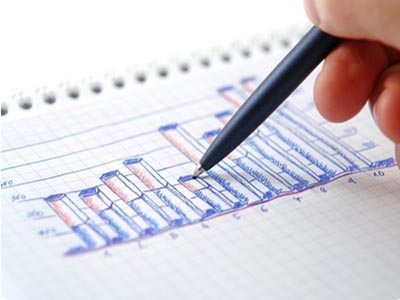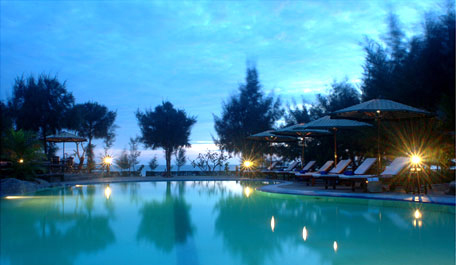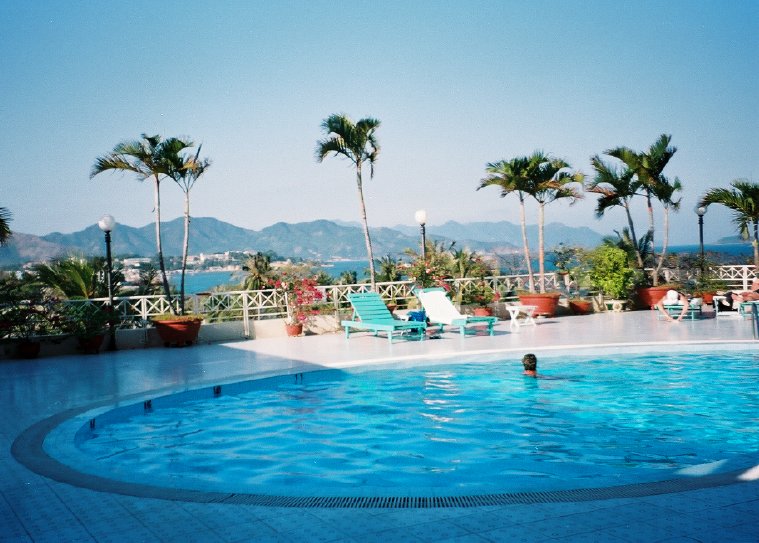INDOCHINA INTERNATIONAL CONSULTING CO., LTD
HO Add: 62L/36 Nguyên Hồng, Ward 11, Bình Thạnh District, HCMC - Vietnam
Biz Office Add: #48 Road No 11, Quarter 6, Hiệp Binh Chánh Ward, Thủ Đức, HCMC - Vietnam
®Source: http://viipip.com should be clearly quoted for any use of information extracted from our website.
Publication permit No: 60/GP-TTĐT , April 05, 2010.

development of free economic zone in the world
According to statistics of the largest economic and trade organization of the United Nations system (UNCTAD), by 2019 there are 5,383 free economic zones in 147 countries divided as follows:
Developed countries have 374 zones, accounting for 6.9% of the total number of free economic zones; Europe has 105 zones, accounting for 2.0%; North America has 262 zones, accounting for 4.9%.
Developing countries have 4,772 zones, accounting for 88.3%; Asia: there are 4,046 zones, accounting for 74%; Africa has 237 zones, accounting for 4.3%; Latin America and the Caribbean have 486 zones, accounting for 9%.
The transition economies have 237 zones, accounting for 4.3%; the least developed countries have 173 zones, accounting for 3.2%; landlocked developing countries have 146 zones, accounting for 2.7%; small island developing countries have 33 zones, accounting for 6%.
Observing the development history of the world free economic zone shows that, before World War II, the development of free economic zones in the world was slow, the number was not much, mainly concentrated in the areas of the world. Developed countries, its type and function are also very simple, focusing only on preserving, packaging and transporting finished products. After World War II, along with the rapid development of international trade and science and technology, international economic activities became stronger and stronger, and free economic zones in the world developed rapidly. Especially developing countries, on the one hand, protect national industries, implement trade protection policies, on the other hand, expand exports and develop economy. To promote exports, it is necessary to implement a tax policy and different administrative and economic institutions, second, good infrastructure is needed, but most developing countries cannot do both at the same time on a national scale. Therefore, developing countries learn the practices and models of developed countries, forming different types of free economic zones in developed ports and transportation areas, in order to promote economic development. develop. With the participation of developing countries, the free economic zone in the world has grown stronger.
The types of free economic zones in the world are very diverse, but there can be main types, such as: Specialized and specialized free economic zones; export processing and processing specialists; specializes in tourism; specialized in finance, science - technology...; Free economic zones are multi-sectors and multi-sectors; International Cities.
The development of a free economic zone brings many practical benefits in accelerating the accumulation of capital and technology, contributing to the industrialization and modernization of the country’s economy; contribute to enhancing the country’s external economic activities; play a leading role in pulling the development of other regions and the whole country; play an active role in solving social problems.
Free economic zones play a very important role in shortening the time and cost to penetrate into world markets, especially markets with large capacity. The main reason is due to the system of special economic incentives applied in the special economic zone. These policies create favorable conditions for foreign investors when pouring capital into the special zone, while also creating a clear environment for goods from the special zone to go abroad. The goods of the special zone are encouraged to be exported by not having to pay export taxes, or if so, only a few very low taxes. In addition, the low cost of hiring labor, the cost of cheap local materials... All these advantages have helped the export goods of the free economic zone to lower production and export costs, reduce production and export costs. prices and selling prices of goods,
Currently, many countries have developed a free economic model, such as: 1) China’s special economic zone model, including the special economic zones of Shenzhen, Zhuhai and Shantou in Guangdong and Xiamen provinces. Fujian province was established in turn and quickly became a bridge connecting huge capital flows from newly industrialized countries with a labor market and consumer goods of 1.2 billion people. Special economic zones contribute from 50% to 80-90% of GDP growth in some regions; improve the quality of technology in many localities; 2) In Europe and North America, the number of free economic zones has remained almost unchanged since the establishment of the European Union and the North American free trade area, because of the free economic space in the two countries. This area has expanded, tariff and non-tariff barriers have been removed, the two areas have truly become a single market. In the near future, the number of free economic zones in North America and Europe will not increase in number. However, when the UK left the European Union, leaving a single market, the UK immediately decided to build 10 new free border ports to open the economy instead of being a member of the European Union. Europe already has; 3) Southeast Asian coastal countries have also built free economic zones, but the most successful is Singapore. In essence, Singapore is already an international and free city with the world’s leading international financial center and a modern free seaport system. Other countries like Indonesia, Philippines, Malaysia... have also built free economic zones, but the success rate is low. Britain immediately decided to build 10 new free border ports to open up the economy instead of the existing EU member status; 3) Southeast Asian coastal countries have also built free economic zones, but the most successful is Singapore. In essence, Singapore is already an international and free city with the world’s leading international financial center and a modern free seaport system. Other countries like Indonesia, Philippines, Malaysia... have also built free economic zones, but the success rate is low. Britain immediately decided to build 10 new free border ports to open up the economy instead of the existing EU member status; 3) Southeast Asian coastal countries have also built free economic zones, but the most successful is Singapore. In essence, Singapore is already an international and free city with the world’s leading international financial center and a modern free seaport system. Other countries like Indonesia, Philippines, Malaysia... have also built free economic zones, but the success rate is low. In essence, Singapore is already an international and free city with the world’s leading international financial center and a modern free seaport system. Other countries like Indonesia, Philippines, Malaysia... have also built free economic zones, but the success rate is low. In essence, Singapore is already an international and free city with the world’s leading international financial center and a modern free seaport system. Other countries like Indonesia, Philippines, Malaysia... have also built free economic zones, but the success rate is low.
Những đặc trưng chủ yếu của các khu kinh tế tự do
Khuyến khích thuế của khu kinh tế tự do
Chính sách khuyến khích đầu tư và giảm thuế mà các khu kinh tế tự do thực hiện đã thể hiện chức năng của chính sách thuế hiện đại. Tuy nhiên, giữa các nước, hay trong những giai đoạn phát triển kinh tế khác nhau của một nước, việc khuyến khích đầu tư và giảm thuế là không giống nhau. Đối với các loại hình khu kinh tế tự do các chính sách khuyến khích đầu tư và giảm thuế cũng có những khác biệt, thông thường khu vườn khoa học công nghệ được ưu đãi nhiều hơn khu gia công xuất khẩu.
Currently, developing countries are competing fiercely to attract capital and technology, trying to apply measures to relax investment incentives and reduce taxes. This trend occurs not only between countries, but also between different businesses or regions within a country. Therefore, attracting and taking advantage of foreign investment and technology, developing countries have many incentives for foreign capital and traders, which can be explained and is the right thing to do. However, if incentives and freedoms are excessive, then these measures will not be conducive to increasing tax revenues for developing countries, not conducive to improving the situation - international revenue and expenditure. At present, there are a number of countries and regions due to the improvement of the overall economic environment, are gradually reducing the incentives and incentives for free economic zones. Especially, the tax exemption and reduction in export processing zones, in fact, the export subsidies are deformed, which is easy to cause anti-dumping phenomenon of some major trading countries. some export processing zones are facing difficulties caused by the abolition of export incentives.
On land and equity policy
Many countries around the world have issued ordinances related to the use of land in free economic zones, there are strict regulations on land use, but the specific measures are not exactly the same. Basically, there are several measures as follows: 1) Do not allow foreign businessmen to own land; 2) Foreign entrepreneurs can own land; 3) Foreign entrepreneurs can own land, but there must be a specific quantity limit: 4) Foreign entrepreneurs can own land in remote areas of development, but are not allowed to buy land in the capital. capital or around the big city to build factories. However, the same measure is that all countries allow land to be rented.
The right to hold shares in foreign enterprises in the free economic zone is a matter of different opinions. Usually, developing countries have regulations restricting the percentage of shares of transnational companies and foreign traders investing in their country’s free economic zone, in order to protect the country’s sovereignty. However, there are many differences in understanding and handling this problem.
The circulation of money of the free economic zone
Currency is related to the issue of stability of sovereignty and foreign exchange of a country. What currency is used in the free economic zone? Are the currencies inside and outside the EZ the same, or is there a difference? There are some economists who advocate that the free economic zone can use the currency of the host country, moreover, the money circulating in and out of the economic zone needs to be unified. In the economic zone, it is possible to change the currency of the host country into dollars (USD), but for money that local people bring when entering the economic zone, they must make the same report as when going abroad to avoid phenomenon outside the economic zone that cannot exchange foreign exchange and move into the economic zone for exchange. If the currency difference between the home country and foreign exchange is too large, USD can be used directly. But the free exchange rate should be reasonably constrained, foreign exchange output must not be higher than input foreign exchange, so as not to affect the balance of foreign exchange import and export. But doing so requires a precondition, that is, not to establish an international financial center, if an international financial center has been established, it cannot be restricted anymore.
The policy of on-the-spot consumption of products of enterprises in the free economic zone and the issue of localization
About the policy of on-site consumption of products of enterprises
The local consumption of the product involves the protection of the industry of the host country. The issue of industrial protection and how to protect it in developing countries still has many different opinions: there are opinions that, applying an industrial protectionist policy too much, will affect the development of the industry. to a higher level of the industry in that country. Another opinion is that, in the process of industrialization, it is necessary for developing countries to apply protectionism, but it is not advisable to apply the form of protection "in a static state" in the long run long, but "dynamic state" protection should be applied. At the same time, the time of application of protection must also be reasonable and the term of protection must be specified. During the protection period, it is necessary to gradually lower the level of protection, so that domestic enterprises do not arise psychological dependence on stomp. There is also an opinion that, It is necessary to calculate the totality of protection measures, protection suitable for economic development is possible protection. The outcome of the development of the import substitution industry is not necessarily a reduction in the degree of dependence on imports, at times an increase in the degree of dependence on imports. The debate on industrial protection is reflected in the issue of local consumption of products of foreign-invested enterprises.
Currently, many developing countries have applied flexible policies of local consumption and export for products of foreign-invested enterprises. In this regard, there are many differences in how countries deal with it, with a small local consumption rate and a large export rate, which usually affects the investment intentions of foreign investors. On the contrary, will harm the development of the host country’s ethnic industry. Therefore, how to regulate the rate of products for local consumption and export is both a practical and a theoretical issue; at the same time, setting the rate of local consumption and export for goods of foreign-invested enterprises is a complicated matter, so it is necessary to have a legal basis.
Regarding the localization of the company’s products
The level of localization of products of foreign-invested enterprises, also known as the rate of homemade products. Like the rate of local consumption and export, the rate of homemade products is related to both the direct interests of foreign investors and the protection of the host country’s industries. . Therefore, when taking advantage of foreign capital and technology, it is necessary to properly calculate and solve these problems.
The rate of homemade products normally refers to products designed and manufactured by foreign enterprises, which will replace some necessary materials or certain components produced in the country. However, there are two different ways of thinking about the proportion of homemade products: first, the proportion of homemade products is within the scope of industrial protection, so there is no need to implement the rate regime of homemade products. Second, the rate of homemade products is a good tool for developing countries to build an industrial base, so it is very important to use this tool. Both of these ways of thinking make sense. Because in the process of industrialization, developing countries need to import a large amount of mechanical equipment, raw materials, energy, even food; Therefore, the source of foreign exchange spending is very large, while, Durable consumer products also depend on imports, which further exacerbates the state’s foreign exchange imbalance. Therefore, usually developing countries apply the import management regime of consumer products, but in order not to affect the people’s daily needs, some imported components are replaced with imported ones. conditions of the same type of domestic production to create finished products, in order to reduce the pressure of foreign exchange spending. Therefore, it can be seen that saving foreign exchange is the first purpose that regulates the rate of homemade products of developing countries. replacing some imported components with domestically produced components of the same type to create finished products, in order to reduce foreign exchange spending pressure. Therefore, it can be seen that saving foreign exchange is the first purpose that regulates the rate of homemade products of developing countries. replacing some imported components with domestically produced components of the same type to create finished products, in order to reduce foreign exchange spending pressure. Therefore, it can be seen that saving foreign exchange is the first purpose that regulates the rate of homemade products of developing countries.
Do các linh kiện sản xuất và cung cấp từ các nước đang phát triển, đều phải phù hợp với yêu cầu và tiêu chuẩn thiết kế kỹ thuật của các doanh nghiệp nước ngoài, cho nên linh kiện phụ kiện từ thiết kế, chế tạo mẫu đến kỹ thuật gia công... thường đều phải do doanh nghiệp đầu tư nước ngoài cử cán bộ kỹ thuật của doanh nghiệp đến chỉ đạo cụ thể, từ đó có lợi cho việc thúc đẩy chuyển giao công nghệ, nâng cao trình độ kỹ thuật chế tạo công nghiệp của các nước đang phát triển. Đặc biệt là loại sản phẩm tập trung hàm lượng kỹ thuật cao do hàng ngàn linh kiện nhỏ tạo thành, ví dụ chế tạo xe hơi sẽ liên quan đến rất nhiều ngành công nghiệp, bao gồm điện tử, gia công cơ khí tinh xảo, nguyên vật liệu cao cấp, cao su, vật liệu nhựa, dầu thô... Do vậy, quy định tỷ lệ sản phẩm tự chế sẽ tạo ra hiệu quả mang tính liên hoàn, thúc đẩy nhiều ngành công nghiệp cùng phát triển, tăng cơ hội việc làm.
Tỷ lệ sản phẩm tự chế vẫn được coi là một biện pháp mang tính bảo hộ. Do vậy, một số nước đang phát triển coi tỷ lệ sản phẩm tự chế là kế thích nghi tạm thời trong thời kỳ quá độ công nghiệp hóa. Điều đặc biệt cần được chú ý là, do những sai lầm trong cách tính toán và tỷ lệ quy định của sản phẩm tự chế, nên thường tạo thành sự lãng phí trong đầu tư của các nước đang phát triển, người chịu thiệt thòi là người tiêu dùng, đồng thời khiến chất lượng sản phẩm khó đạt đến trình độ tiên tiến quốc tế. Do vậy quy định tỷ lệ tự chế ra sao đã trở thành một vấn đề hiện thực quan trọng. Hiện nay, trên thế giới có 5 cách tính toán tỷ lệ tự chế. 1) Biện pháp trọng lượng; 2) Phương pháp tính điểm; 3) Phương pháp so sánh giá thành; 4) Phương pháp chỉ định hạng mục; 5) Phương pháp tổng hợp.
Những sản phẩm hướng ra thị trường quốc tế được sản xuất trong khu kinh tế tự do, đều gồm các linh kiện do các doanh nghiệp trong khu kinh tế cung cấp. Nhưng thông thường, tỷ lệ sản phẩm tự chế trong khu kinh tế tự do đều thấp hơn tỷ lệ sản phẩm tự chế bên ngoài. Không chỉ các nước đang phát triển coi trọng trình độ tỷ lệ sản phẩm tự chế, mà các nước phát triển phương Tây cũng đều thực hiện chế độ này.
Về hệ thống nghiệp vụ bảo hộ thuế linh hoạt của khu kinh tế tự do
Kho bảo hộ thuế đã hình thành hệ thống nghiệp vụ bảo hộ thuế. Việc xây dựng hệ thống nghiệp vụ bảo hộ thuế có vai trò rất quan trọng trong việc thúc đẩy thương mại chuyển khẩu và thương mại tam giác, mở rộng hoạt động kinh tế thương mại. Khảo sát từ góc độ xây dựng khu kinh tế tự do trên thế giới, có những cảng tự do và khu mậu dịch tự do chính là những kho bảo hộ thuế phát triển dần lên. Do hệ thống nghiệp vụ bảo hộ thuế có thể thu được rất nhiều lợi ích kinh tế, do vậy nhiều nước trên thế giới đã xây dựng nhiều kho bảo hộ thuế và nhà xưởng bảo hộ thuế.
Ba bộ phận tạo thành hệ thống nghiệp vụ bảo hộ thuế, có điểm chung là cung cấp hệ thống nghiệp vụ bảo hộ thuế, và các dịch vụ kèm theo, nhưng phạm vi nghiệp vụ kinh doanh không hoàn toàn giống nhau. Kho bảo hộ thuế dành cho các sản phẩm nước ngoài không cần làm thủ tục hải quan sẽ được đưa vào lưu trữ ở kho này. Trong thời gian lưu trữ theo quy định, không phải nộp thuế, khi trung chuyển ra khỏi kho và xuất khẩu lại cũng được miễn thuế. Nhưng hàng hóa trong kho khi đưa vào khu quản lý hải quan sẽ phải nộp thuế theo quy định.
Phân tích chức năng cụ thể của kho bảo hộ thuế, có thể chia làm 3 loại: 1) Kho bảo hộ thuế tổng hợp, lưu trữ nhiều loại nguyên liệu, sản phẩm trung gian và thành phẩm; 2) Kho bảo hộ thuế đơn nhất, chỉ lưu trữ một loại sản phẩm; 3) Kho bảo hộ thuế theo mô hình quá cảnh, thông thường là kho bảo hộ thuế được xây dựng tại những nước ven biển có đường giao thông quốc tế thuận tiện, cung cấp các dịch vụ thuận tiện như xuất nhập khẩu, kho bãi, vận tải hàng hóa cho các nước nội địa láng giềng nhằm thu ngoại tệ.
Nhà máy bảo hộ thuế lại có đặc tính chức năng của doanh nghiệp khu gia công xuất khẩu, tức là nhập khẩu thiết bị cơ khí, nguyên vật liệu, sản phẩm trung gian và xuất khẩu thành phẩm sau khi các sản phẩm này được gia công hoặc sản xuất, đều được ưu đãi về thuế quan. Điều khác biệt là nhà máy bảo hộ thuế quan khá phân tán, không nhất thiết phải tập trung ở khu vực nhất định giống như các doanh nghiệp trong khu gia công xuất khẩu.
So với kho bảo hộ thuế, nhà máy bảo hộ thuế thì khu bảo hộ thuế chiếm diện tích lớn hơn, phạm vi nghiệp vụ kinh doanh rộng hơn, trong khu vừa có thể bảo quản, kho bãi vừa có thể gia công sản xuất. Về vai trò chức năng và nghiệp vụ kinh doanh thì khu bảo hộ thuế là thể dung hòa giữa kho bảo hộ thuế và nhà máy bảo hộ thuế, có thể coi là “khu gia công xuất khẩu theo mô hình nhỏ”. Trong khu kinh tế tự do thế giới, những khu kinh tế tự do được gọi là khu bảo hộ thuế thực sự không nhiều. Nghiệp vụ bảo hộ thuế mặc dù nói là tồn tại cùng với sự xuất hiện của cảng tự do, nhưng cho đến nay, số lượng kho bảo hộ thuế, nhà máy bảo hộ thuế và khu bảo hộ thuế đã vượt quá xa cảng tự do, khu mậu dịch tự do và khu gia công xuất khẩu. Lợi ích kinh tế của hệ thống nghiệp vụ bảo hộ thuế không giống nhau. Có cái hiệu quả cao, có cái hiệu quả không tốt lắm. Do vậy, làm thế nào để xây dựng hệ thống nghiệp vụ bảo hộ thuế linh hoạt đã trở thành điểm đáng chú ý của các nước.
Về vấn đề giá thành xã hội đối với ô nhiễm môi trường khu kinh tế tự do
Rất nhiều khu kinh tế tự do của các nước đang phát triển, đặc biệt là khu gia công xuất khẩu, tập trung nhiều ngành công nghiệp gây ô nhiễm lớn. Việc sản xuất của những ngành công nghiệp này mặc dù đem lại lợi nhuận và việc làm, nhưng cũng không thể tránh khỏi cái giá phải trả như gây ra ô nhiễm… Các doanh nghiệp luôn chạy theo lợi nhuận, đã không nhìn thấy những cái giá phải trả, ngược lại còn lao vào hoạt động kinh doanh sản xuất gây ô nhiễm. Do vậy, nhà nước cần vận dụng lý luận “giá thành xã hội”, dùng các phương thức xử phạt... tăng giá thành sản xuất của những doanh nghiệp chỉ lao vào sản xuất mà không quan tâm đến bảo vệ môi trường để hạn chế mức độ ô nhiễm.
Các khu kinh tế ven biển Việt Nam - Thực trạng và giải pháp
Việt Nam có lợi thế về biển với 3.260 km bờ biển, 50 cảng biển, trong đó có những cảng biển nước sâu hàng đầu thế giới như Cam Ranh, Văn Phong…, những cảng biển nước sâu hầu như rải khắp từ Bắc chí Nam như: Chùa Vẽ, Đình Vũ, Cái Lân, Cẩm Phả, Lạch Huyện (miền Bắc), Nghi Sơn, Cửa Lò, Hòn La, Vũng Áng, Chân Mây, Tiên Sa, Dung Quất, Kỳ Hà, Quy Nhơn, Nha Trang, Ba Ngòi (miền Trung), Cảng Sài Gòn, Đồng Nai, Thị Vải, Tân Cảng, Cái Mép, Cái Cui, Cần Thơ, Trà Nóc (miền Nam)…
In 1997, at the 4th Central Conference (term VIII) of the Central Committee of the Communist Party of Vietnam, it was determined that “Study and pilot construction of a few special economic zones and free trade zones in the coastal areas”. sea is eligible”. But it was not until 2002 that a decision was made to build "Chu Lai Open Economic Zone" in Quang Nam province. All coastal economic zones established after that are called economic zones. According to Decision No. 1363/QD-TTg dated September 26, 2008, the Government decided to build 18 economic zones in: Van Don (Quang Ninh), Dinh Vu - Cat Hai (Hai Phong), Nghi Son (Thanh Hoa), Southeast (Nghe An), Vung Ang (Ha Tinh), Hon La (Quang Binh), Chan May - Lang Co ( Thua Thien Hue), Chu Lai (Quang Nam), Dung Quat (Quang Ngai), Nhon Hoi (Binh Dinh), Nam Phu Yen, Van Phong (Khanh Hoa), Phu Quoc (Kien Giang), Dinh An (Tra Vinh) , Nam Can (Ca Mau), 3 economic zones will be added as follows: Thai Binh, Ninh Co (Nam Dinh), Dong Nam (Quang Tri). These 18 economic zones have a total area of 7,306 km2, of which 15 have been built with infrastructure with a capital of 11,361 billion VND supported by the Central Government.
Of the 15 economic zones that have been built, Chu Lai Open Economic Zone (Quang Nam) is the first to be piloted and has achieved some results after 15 years of construction. Chu Lai economic zone has attracted many projects, including 43 FDI projects with registered capital of 1.5 billion USD, 115 investment projects of Vietnamese enterprises with registered capital of 66.7 trillion dong, of which 111 projects have been put into operation. Chu Lai economic zone has built 4 industrial parks, the occupancy rate is more than 80%, attracted 22 investment projects to develop tourism and had 7 projects in operation. Truong Hai Automobile Joint Stock Company built a multi-use car complex, specializing in the auto industry… The economic zones established then went into operation with different development orientations depending on specific conditions. body. Dinh Vu economic zone (Hai Phong) develops in the direction of industry and logistics services; economic zones of Van Don (Quang Ninh) and Nhon Hoi (Binh Dinh), Phu Quoc (Kien Giang)... specializing in services; Vung Ang economic zone (Ha Tinh province) specializes in metallurgy…
Hoạt động của các khu kinh tế ven biển Việt Nam trong những năm qua tuy đã đạt được những kết quả nhất định trên các mặt: Thu hút các nguồn vốn trong nước và vốn FDI, giải quyết việc làm cho hàng vạn người, đóng góp cho ngân sách nhà nước… Nhưng hiện nay, các khu kinh tế này chỉ là các khu công nghiệp dịch vụ được xây dựng ở ven biển với những ưu đãi của Nhà nước: Ưu đãi về đầu tư, các khu kinh tế đều được hưởng chính sách ưu đãi đầu tư cao nhất đang áp dụng mức thuế thu nhập doanh nghiệp 10% trong 15 năm kể từ khi dự án bắt đầu hoạt động, được miễn thuế thu nhập doanh nghiệp 4 năm kể từ khi có thu nhập chịu thuế, giảm 50% số thuế phải nộp cho 9 năm tiếp theo, giảm 50% thuế thu nhập đối với người có thu nhập cao. Ngân sách Nhà nước hỗ trợ xây dựng các công trình kết cấu hạ tầng kinh tế xã hội trong khu kinh tế không có khả năng thu hồi vốn, hỗ trợ đầu tư xây dựng các kết cấu hạ tầng kỹ thuật tới hàng rào các khu chức năng của khu kinh tế…; Ưu đãi về huy động vốn đầu tư phát triển kinh tế, trong thời hạn 15 năm đầu - thành lập kinh tế, ngân sách Nhà nước cân đối hàng năm, không thấp hơn toàn bộ nguồn thu ngân sách trên địa bàn khu cho yêu cầu đầu tư phát triển cơ sở hạ tầng kinh tế xã hội của khu; Phát hành trái phiếu Chính phủ, ưu tiên sử dụng nguồn vốn ODA, vốn tín dụng ưu đãi, thu hút các nguồn vốn BOT, BT, BTO, huy động vốn từ quỹ đất; Các chính sách liên quan đến hoạt động của khu kinh tế đã được ban hành: cho phép các ngân hàng thương mại trong và ngoài nước được hoạt động trong khu, các ưu đãi về cấp thị thực, cư trú, giấy phép lao động, chính sách tái định cư, chính sách vận động đầu tư.
Do vậy, các khu kinh tế ven biển Việt Nam chưa có sức cạnh tranh quốc tế vì chưa có thể chế hành chính và kinh tế đạt đẳng cấp quốc tế vượt trội, cơ sở hạ tầng kinh tế - xã hội chủ yếu dựa vào nguồn ngân sách nhà nước bị hạn chế, nguồn nhân lực quản lý các khu kinh tế chưa đạt trình độ quốc tế, chưa có nhà đầu tư chiến lược nước ngoài tham gia…
Năm 2006 - 2007, Tập đoàn SamaDubai thuộc các Tiểu vương quốc Ảrập thống nhất đã đề xuất dự án xây dựng khu đô thị mới ở Phú Yên với số vốn hàng trăm tỷ USD, với thể chế hành chính và kinh tế hiện đại có sức cạnh tranh quốc tế và khu vực. Đề án này đã được lãnh đạo Việt Nam chấp thuận, nhưng vì khủng hoảng kinh tế thế giới nổ ra vào năm 2008 nên đề án phải dừng lại.
Năm 2013, Tập đoàn tài chính của Mỹ đã đề xuất dự án xây dựng trung tâm tài chính quốc tế thứ 13 ở Bắc Văn Phong (Khánh Hòa) với số vốn 300 tỷ USD, với thể chế hành chính hiện đại và kinh tế hiện đại, cơ sở hạ tầng vượt trội so với trung tâm tài chính Hồng Kông và Singapore. Đề án này sau đó đã không đi vào thực hiện.
Có thể thấy, hai đại dự án đầu tư nước ngoài trên cho thấy sức hấp dẫn của vùng ven biển Việt Nam, và muốn sử dụng được vùng ven biển này có hiệu quả, phải có các nhà đầu tư chiến lược nước ngoài tham gia.
Những kiến nghị phát triển khu kinh tế tự do ở Việt Nam
Một là, Chính phủ Việt Nam nên thuê các tập đoàn quy hoạch hàng đầu thế giới thực hiện quy hoạch tổng thể việc sử dụng các tài nguyên ven biển Việt Nam. Vì các tập đoàn quy hoạch này có kinh nghiệm và năng lực quy hoạch những tài nguyên tầm cỡ thế giới, hơn nữa họ có các tập đoàn kinh tế tài chính, công nghệ… sẵn sàng tin tưởng họ và đầu tư vào sử dụng các tài nguyên đó. Cả Samadubai (Các Tiểu vương quốc Ả rập thống nhất) và Tập đoàn tài chính Mỹ cũng đã phải thuê tổ chức Monitơ của Mỹ quy hoạch khu đô thị mới Phú Yên và Trung tâm tài chính quốc tế Văn Phong - Khánh Hòa.
Hai là, thí điểm xây dựng 3 cảng tự do theo mô hình của Anh mới quyết định xây dựng năm 2020. Đồng thời, xây dựng 3 khu thương mại tự do theo mô hình của Trung Quốc, xây dựng 1 khu kinh tế chuyên về năng lượng mặt trời, gió và điện hải lưu ở miền Trung, Việt Nam.
Third, Vietnamese companies, especially private ones, are entitled to preferential treatment in the implementation of the master plan. Free economic zones, free trade zones, free ports of special economic zones, international cities, etc., must be taken into account in the master plans. But the main goal of building coastal economic zones is to attract FDI with high technology to develop modern high-tech industries and modern services.
In fact, the most successful coastal free economic zones in the world are in developed countries. The establishment of free economic zones is the most in developing countries, but the success rate is not high. There are many reasons, but the main reason is that the administrative and economic institutions of these zones are not modern and international enough, so they have not attracted human, financial, and foreign investors. work. Up to now, Vietnam has 15 coastal economic zones, but they are still only industrial zones with preferential policies. Vietnam does not have a free economic zone in its own right, that is, using a modern and international administrative and economic institution to attract foreign investors.
Martial Arts
TSKH, former Director of the Institute of World Economics and Politics
- FDI capital continues to pour into Vietnam (6/11/2025 1:20:33 PM)
- Thanh Hoa receives good news: Preparing to have an additional industrial park of up to 470 hectares, creating jobs for nearly 30,000 people (6/11/2025 1:15:09 PM)
- Industrial Park Real Estate: Waiting for the New Generation of FDI (6/11/2025 1:10:15 PM)
- A wealthy Vietnamese city will have two special economic zones after the merger (6/11/2025 1:04:42 PM)
- 30 billion USD capital FDI in Việt Nam by 2025, a series of "ông big" races to expand the land fund (6/11/2025 12:55:26 PM)
- the 2nd largest city in the North will start construction on an international economic zone (6/11/2025 12:50:20 PM)
- Japanese giant Sumitomo continues to want to build an industrial park in the countrys fourth smallest province. (6/11/2025 12:40:45 PM)
- 3 foreign corporations want to invest billions of dollars in Ba Ria - Vung Tau (6/11/2025 12:34:30 PM)
- Lotte Group member starts construction of nearly 1,000 billion VND logistics center in the province with the most industrial parks in Vietnam (6/11/2025 12:33:26 PM)
- Forming a regional center for manufacturing spare parts and components (6/11/2025 12:24:08 PM)
- Vietnams first wafer factory is about to start construction (6/11/2025 12:19:09 PM)
- Dong Nai attracts foreign investors (6/11/2025 12:13:27 PM)
- Tay Ninhs largest industrial park welcomes a $150 million high-end knitted fabric factory project (6/11/2025 12:11:00 PM)
- (6/11/2025 12:09:10 PM)
- Vietnam will become a destination for Chinese investors in the future (11/6/2023 1:03:19 PM)

- FDI capital continues to pour into Vietnam
- Thanh Hoa receives good news: Preparing to have an additional industrial park of up to 470 hectares, creating jobs for nearly 30,000 people
- Industrial Park Real Estate: Waiting for the New Generation of FDI
- A wealthy Vietnamese city will have two special economic zones after the merger
- 30 billion USD capital FDI in Việt Nam by 2025, a series of "ông big" races to expand the land fund










 ADB: Vietnam’s 2009 GDP growth to be highest in South East Asia
ADB: Vietnam’s 2009 GDP growth to be highest in South East Asia MGM Grand Ho Tram: Vietnam’s First ‘Las Vegas Style’ Integrated Resort
MGM Grand Ho Tram: Vietnam’s First ‘Las Vegas Style’ Integrated Resort Nha Trang’s Twin Towers project licenced
Nha Trang’s Twin Towers project licenced Foreign investors still have good opportunities in Vietnam
Foreign investors still have good opportunities in Vietnam Sierra Wireless gets a foot in Vietnam’s ICT market
Sierra Wireless gets a foot in Vietnam’s ICT market